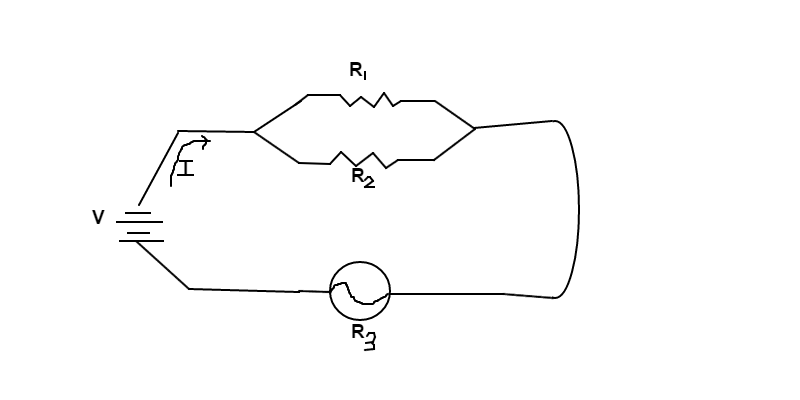Simple Resistor: Calculating Current

The diagram above shows a simple circuit of an battery ( ) and two resistors ( ) that are in parallel followed in series by a light bulb. The resistances are as followed: , , and ; where is the resistance of the light bulb.
Calculate the current ( ) of the circuit in .
David's Electricity Set
The answer is 0.5.
This section requires Javascript.
You are seeing this because something didn't load right. We suggest you, (a) try
refreshing the page, (b) enabling javascript if it is disabled on your browser and,
finally, (c)
loading the
non-javascript version of this page
. We're sorry about the hassle.
Equivalent Resistor from Parallel Resistors: R a = ( R 1 1 + R 2 1 ) − 1 = ( 6 1 + 3 0 1 ) − 1 = ( 5 1 ) − 1 = 5 Ω Equivalent Resistor from Resistors in Series: R c i r c u i t = R a + R 3 = 5 + 1 7 = 2 2 Ω Current Calculation: I = R c i r c u i t V = 2 2 Ω 1 1 V = 2 1 A = 0 . 5 A